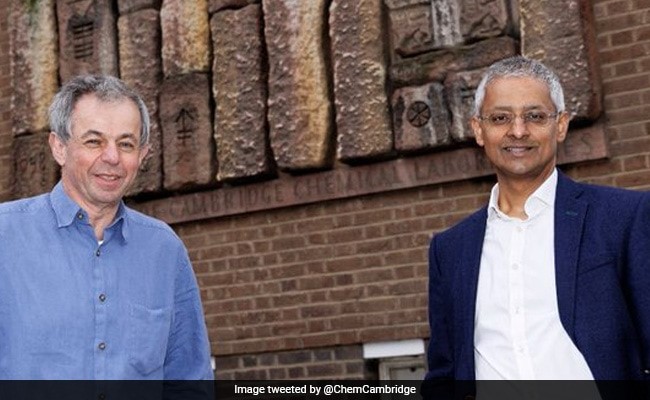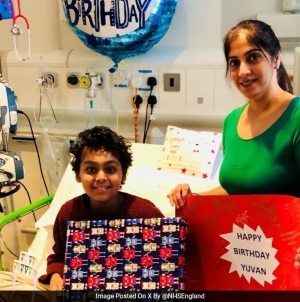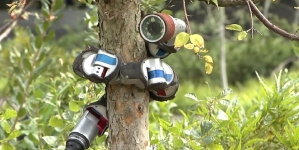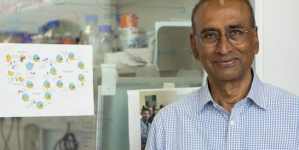-
IRELAND: “From 800 to 7,000”: Ireland’s Education Appeal Soars Among Indian Students - 2 days ago
-
TORONTO: Canada Sets Weekly Work Hour Limit For Indian Students At 24 - May 3, 2024
-
TORONTO: India strongly protests ‘Khalistan’ slogans at a public event attended by Canadian leaders - May 2, 2024
-
TOKYO: Japan Offers Scholarships To Indian Students Pursuing Research - May 1, 2024
-
ZAGREB: India-Croatia Foreign Office Consultations (FOC) - May 1, 2024
-
BUCHAREST: Government Of Romania To Offer Scholarships To Indian Students - April 30, 2024
-
WASHINGTON: India Now Second-Largest Source Country For New Citizens In US- Report - April 30, 2024
-
LONDON: Run For Modi” Event In London To Drum Up Support For PM Modi - April 29, 2024
-
LONDON: Indian-Origin Candidate On How He Plans To Win London Mayoral Polls - April 28, 2024
-
HARVARD: No Country Is Perfect”: Physics Wallah Urges Indian Students At Harvard, Stanford To Return - April 27, 2024
LONDON: Indian-Origin Chemist Among Tech ‘Nobel’ Prize Winners For Revolutionary DNA Technique
LONDON: Cambridge University chemists
Shankar Balasubramanian and David Klenerman were on Tuesday declared the
winners of the 2020 Millennium Technology Prize, a prestigious global science
and technology prize awarded for their development of revolutionary sequencing
techniques which means DNA can now be read in super-fast times.
The
prize, awarded by Technology Academy Finland (TAF) at two-year intervals since
2004 – when Sir Tim Berners-Lee was honoured for his discovery of the World
Wide Web – to highlight the extensive impact of science and innovation on the
wellbeing of society, is worth Euro 1 million.
Sir
Balasubramanian, an India-born British professor of medicinal chemistry, and
Sir Klenerman, a British biophysical chemist, co-invented the Solexa-Illumina
Next Generation DNA Sequencing (NGS), technology enabling fast, accurate,
low-cost and large-scale genome sequencing – the process of determining the
complete DNA sequence of an organism”s make-up, which is proving crucial in
humanity’s fight against the COVID-19 pandemic.
The duo
went on to co-found the company Solexa to make the technology more broadly
available to the world.
“This
is the first time we’ve received an international prize that recognises our
contribution to developing the technology – but it’s not just for us, it”s for
the whole team that played a key role in the development of the technology and
for all those that have inspired us on our journey,” the winning
scientists said in a joint statement.
President
of the Republic of Finland Sauli Niinisto, who is the Patron of the prize,
presented the award to the scientists in a virtual ceremony on Tuesday.
The
announcement of the 2020 award was delayed due to the COVID-19 pandemic.
Meanwhile,
the technology is being used to track and explore the novel coronavirus viral
mutations, which is a growing global concern.
“The future potential of NGS is enormous and the exploitation of the technology
is still in its infancy,” said Paivi Torma, Academy Professor and Chair of
the Millennium Technology Prize Committee.
“The
technology will be a crucial element in promoting sustainable development
through personalisation of medicine, understanding and fighting killer
diseases, and hence improving the quality of life. Professor Balasubramanian
and Professor Klenerman are worthy winners of the prize,” said Prof.
Torma.
The 2020
prize marks the first time that the honour has been awarded to more than one
recipient for the same innovation, celebrating the significance of
collaboration.
Professor
Marja Makarow, Chair of Technology Academy Finland said: “Collaboration is
an essential part of ensuring positive change for the future. Next Generation
Sequencing is the perfect example of what can be achieved through teamwork and
individuals from different scientific backgrounds coming together to solve a
problem.”
“The
technology pioneered by Professor Balasubramanian and Professor Klenerman has
also played a key role in helping discover the coronavirus”s sequence, which
in turn enabled the creation of the vaccines – itself a triumph for
cross-border collaboration – and helped identify new variants of
COVID-19,” Makarow said.
The
winning work has helped the creation of multiple vaccines, now being
administered worldwide, and is critical to the creation of new vaccines against
new dangerous viral strains. The results will also be used to prevent future
pandemics.
However,
the International Selection Committee – the body of experts that evaluates all
nominations for the prize – pointed out that it had made its decision in
February 2020, before the global spread of the COVID-19 pandemic.
The
technology is also allowing scientists and researchers to identify the
underlying factors in individuals that contribute to their immune response to
COVID-19.
This
information is essential to unravelling the reason behind why some people
respond much worse to the virus than others. The results of these studies will
be invaluable for understanding how to minimise the chances of people
developing exaggerated inflammatory responses, which is now understood as being
responsible for some of the symptoms of COVID-19.
The
winning NGS technology has had, and continues to have, a huge transformative
impact in the fields of genomics, medicine and biology. One measure of the
scale of change is that it has allowed a million-fold improvement in speed and
cost, when compared to the first sequencing of the human genome.
The prize
committee points to how in 2000, sequencing of one human genome took over 10
years and cost more than a billion dollars.
Today,
the human genome can be sequenced in one day at a cost of USD 1,000 and more
than a million human genomes are sequenced at scale each year, thanks to the
technology co-invented by Professors Balasubramanian and Klenerman. This means
the world can understand diseases much better and much more quickly.
The NGS
method’s ability to sequence billions of fragments in a parallel fashion makes
the technique fast, accurate and very cost-efficient. The invention of NGS has
been described as a revolutionary and novel approach to the understanding of
the genetic code in all living organisms.
In the
field of cancer, NGS is becoming the standard analytical method for defining
personalised therapeutic treatment. In addition to medical applications, NGS
has also had a major impact on all of biology as it allows the clear
identification of thousands of organisms in almost any kind of sample.
The NGS
method involves fragmenting sample DNA into many small pieces that are
immobilised on the surface of a chip and locally amplified.
Each
fragment is then decoded on the chip, base-by-base, using fluorescently
coloured nucleotides added by an enzyme. By detecting the colour-coded
nucleotides incorporated at each position on the chip with a fluorescence
detector – and repeating this cycle hundreds of times – it is possible to
determine the DNA sequence of each fragment.
The
collected data is then analysed using sophisticated computer software to
assemble the full DNA sequence from the sequence of all these fragments.
























